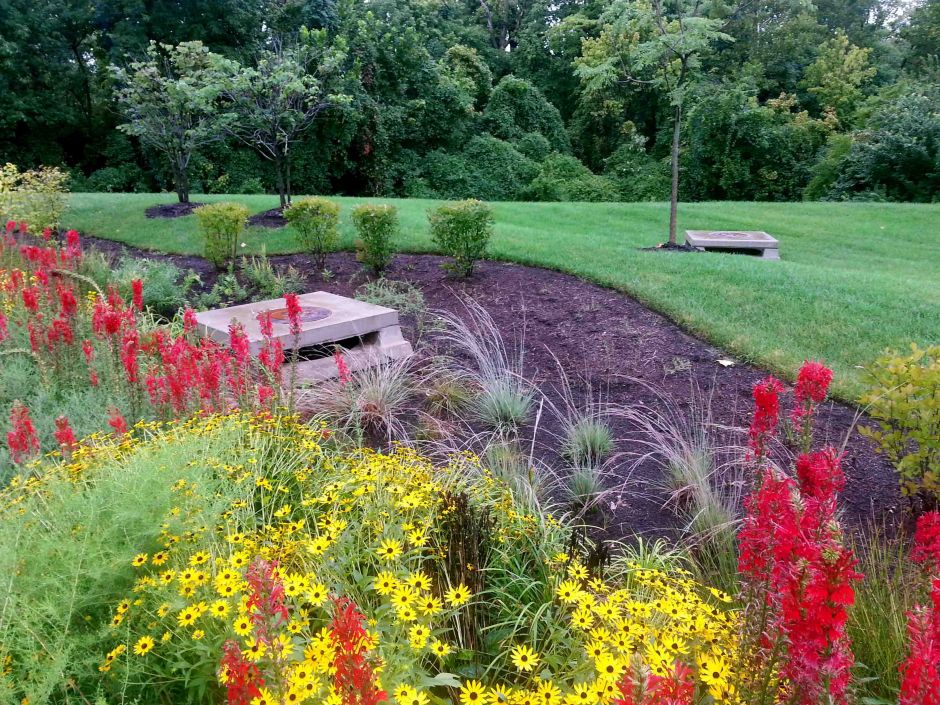Written by: Shonda Lucks
Storm-water Management – MSD Bioretention Basins
The Problem
Governments studies have shown that up to 70% of pollution in aquifers, rivers, lakes and coastal areas is carried there by storm-water runoff coming from rooftops, roads, driveways, sidewalks  and mowed lawns. These impervious surfaces have taken the place of soil that readily absorbs rainwater. The result is an increase in storm water volume and velocity, creating an increase in water pollution, stream-bank erosion and flooding.
and mowed lawns. These impervious surfaces have taken the place of soil that readily absorbs rainwater. The result is an increase in storm water volume and velocity, creating an increase in water pollution, stream-bank erosion and flooding.
Nature will naturally filter storm-water as it run over the hillsides and forest areas before entering the water ways and streams. A healthy native watershed is full of native trees, shrubs, grasses and perennials. Unfortunately urbanization has damaged and destroyed these healthy watersheds. Bioretention areas minimize flooding and slow the flow of storm-water runoff from quickly flowing into the sewer systems caring with it harmful pollutants.
Bioretention basins are landscaped depressions used to slow down the first flush of storm-water runoff and the filtration process in which contaminates and sedimentation are removed from storm-water runoff through soil media and vegetation. The storm-water is collected into the treatment areas that filter over a period of days. The greatest benefit they offer is that they are designed to remove and dissolve forms of heavy metals, sediments (TSS), fecal coliform, pathogens and bacteria, and other pollutants from storm-water runoff before they can enter the storm sewer system.
Bioretention areas can be an attractive way to incorporate green-spaces by using curbs, islands, street-scapes and planters as an innovative method to retain and treat storm-water also known as Best Management Practices (BMP) in St. Louis.
The BMP’s can be grouped into 5 categories:
- Wet Ponds
- Wetlands
- Infiltration Basins & Dry Swales
- Surface Sand Filters
- Bioretention & Organic Filters

Bioretention design standards and guidelines must be used to determine the location, size and cell design. The size will depend on the volume and type of storm-water runoff being filtered.
Let Us Manage Your Bioretention Areas
We can help you properly install and maintain your bioretention areas. Give us a call at 314-770-2828 or use our simple contact form to discuss your sustainability needs.
References:
Metropolitan St. Louis Sewer District. (n.d.). Retrieved from Stormwater Managment: http://www.stlmsd.com/what-we-do/stormwater-management




